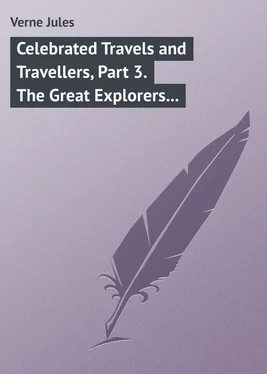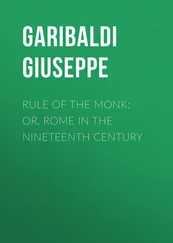Jules Verne - Celebrated Travels and Travellers, Part 3. The Great Explorers of the Nineteenth Century
Здесь есть возможность читать онлайн «Jules Verne - Celebrated Travels and Travellers, Part 3. The Great Explorers of the Nineteenth Century» — ознакомительный отрывок электронной книги совершенно бесплатно, а после прочтения отрывка купить полную версию. В некоторых случаях можно слушать аудио, скачать через торрент в формате fb2 и присутствует краткое содержание. Жанр: foreign_language, foreign_prose, на английском языке. Описание произведения, (предисловие) а так же отзывы посетителей доступны на портале библиотеки ЛибКат.
- Название:Celebrated Travels and Travellers, Part 3. The Great Explorers of the Nineteenth Century
- Автор:
- Жанр:
- Год:неизвестен
- ISBN:нет данных
- Рейтинг книги:5 / 5. Голосов: 1
-
Избранное:Добавить в избранное
- Отзывы:
-
Ваша оценка:
- 100
- 1
- 2
- 3
- 4
- 5
Celebrated Travels and Travellers, Part 3. The Great Explorers of the Nineteenth Century: краткое содержание, описание и аннотация
Предлагаем к чтению аннотацию, описание, краткое содержание или предисловие (зависит от того, что написал сам автор книги «Celebrated Travels and Travellers, Part 3. The Great Explorers of the Nineteenth Century»). Если вы не нашли необходимую информацию о книге — напишите в комментариях, мы постараемся отыскать её.
Celebrated Travels and Travellers, Part 3. The Great Explorers of the Nineteenth Century — читать онлайн ознакомительный отрывок
Ниже представлен текст книги, разбитый по страницам. Система сохранения места последней прочитанной страницы, позволяет с удобством читать онлайн бесплатно книгу «Celebrated Travels and Travellers, Part 3. The Great Explorers of the Nineteenth Century», без необходимости каждый раз заново искать на чём Вы остановились. Поставьте закладку, и сможете в любой момент перейти на страницу, на которой закончили чтение.
Интервал:
Закладка:
The French Consul, Adrien Dupré, attached to Gardane's mission, also published a work, under the title of "Voyage en Perse, fait dans les années 1807 à 1809, en traversant l'Anatolie, la Mésopotamie, depuis Constantinople jusqu'à l'extremité du golfe Persique et de là à Irwan, suivi de détails sur les moeurs, les usages et le commerce des Persans, sur la cour de Téhéran et d'une notice des tribus de la Perse." The book bears out the assertions of its title, and is a valuable contribution to the geography and ethnography of Persia.
The English, who made a much longer stay in the country than the French, were better able to collect the abundant materials at hand, and to make a judicious selection from them.
Two works were long held to be the chief authorities on the subject. One of these was by James Morier, who availed himself of the leisure he enjoyed as secretary to the embassy to acquaint himself with every detail of Persian manners, and on his return to England published several Oriental romances, which obtained a signal success, owing to the variety and novelty of the scenes described, and the fidelity to nature of every feature, however minute.
The second of the two volumes alluded to above was the large quarto work by John Macdonald Kinneir, on the geography of Persia. This book, which made its mark, and left far behind it everything previously published on the subject, not only gives, as its title implies, very valuable information on the boundaries of the country, its mountains, rivers, and climate, but also contains interesting and trustworthy details respecting its government, constitution, army, commerce, animal, vegetable, and mineral productions, population, and revenue.
After giving an exhaustive and brilliant picture of the material and moral resources of the Persian Empire, Kinneir goes on to describe its different provinces, quoting from the mass of valuable documents accumulated by himself, thus making his work the most complete and impartial yet issued.
Kinneir passed the years 1808 to 1814 in travelling about Asia Minor, Armenia, and Kurdistan; and the different posts held by him during that period were such as to give him exceptional opportunities for making observations and comparing their results. In his several capacities as captain in the service of the Company, political agent to the Nawab of the Carnatic, or private traveller, his critical acumen was never at fault; and his wide knowledge of Oriental character and Oriental manners, enabled him to recognize the true significance of many an event and many a revolution which would have escaped the notice of less experienced observers.
At the same time, William Price, also a captain in the East India Company's service, who had been attached as interpreter and secretary to Sir William Gore Ouseley's embassy to Persia in 1810, devoted himself to the study of the cuneiform character. Many had previously attempted to decipher it, with results as various as they were ridiculous; and, like those of his predecessors and contemporaries, Price's opinions were mere guess-work; but he succeeded in interesting a certain class of students in this obscure branch of research, and may be said to have perpetuated the theories of Niebuhr and other Orientalists.
To Price we owe an account of the journey of the English embassy to the Persian court, after which he published two essays on the antiquities of Persepolis and Babylon.
Mr. Ouseley, who had accompanied his brother Sir William as secretary, availed himself of his sojourn at the Court of Teheran to study Persian. His works do not, however, bear upon geography or political economy, but treat only of inscriptions, coins, manuscripts, and literature – in a word, of everything connected with the intellectual and material history of the country. To him we owe an edition of Firdusi, and many other volumes, which came out at just the right time to supplement the knowledge already acquired of the country of the Shah.
Another semi-Asiatic semi-European country was also now becoming known. This was the mountainous district of the Caucasus. As early as the second half of the eighteenth century, John Anthony Guldenstædt, a Russian doctor, had visited Astrakhan, and Kisliar on the Terek, at the most remote boundary of the Russian possessions, entered Georgia, where the Czar Heraclius received him with great respect, and penetrated to Tiflis and the country of the Truchmenes, finally arriving at Imeritia. The next year, 1773, he visited the great Kabardia, the Oriental Kumania, examined the ruins of Madjary, visited Tscherkask and Asov, discovered the mouth of the Don, and was about to extend his researches to the Crimea when he was recalled to St. Petersburg.
Guldenstædt's travels have not been translated into French. Their author's career was cut short by death before he had completed their revision for the press, and they were edited at St. Petersburg by Henry Julius von Klaproth, a young Prussian, who afterwards explored the same countries.
Klaproth, who was born at Berlin on the 11th October, 1783, gave proof at a very early age of a special aptitude for the study of Oriental languages. At fifteen years old he taught himself Chinese; and he had scarcely finished his studies at the Universities of Halle and Dresden, when he began the publication of his "Asiatic Magazine." Invited to Russia by Count Potoki, he was at once named Professor of Oriental Languages at the Academy of St. Petersburg.
Klaproth did not belong to the worthy race of book-worms who shut themselves up in their own studies. He took a wider view of the nature of true knowledge, feeling that the surest way to attain a thorough acquaintance with the languages of Asia and of Oriental manners and customs was to study them on the spot. He therefore asked permission to accompany the ambassador Golowkin, who was going to China overland; and the necessary credentials obtained, he started alone for Siberia, making acquaintance with the Samoyèdes, the Tongouses, Bashkirs, Yakontes, Kirghizes, and other of the Finnic and Tartar hordes which frequent these vast steppes, finally arriving at Yakutsk, where he was soon joined by Golowkin. After a halt at Kiakta, the embassy crossed the Chinese frontier on the 1st January, 1806.
The Viceroy of Mongolia, however, insisted upon the observance by the ambassador of certain ceremonies which were considered by the latter degrading to his dignity; and neither being disposed to yield, Golowkin set out with his suite to return to St. Petersburg. Klaproth, not caring to retrace his steps, preferred to visit hordes still unknown to him, and he therefore crossed the southern districts of Siberia, and collected during a journey extending over twenty months, a large number of Chinese, Mandchoorian, Thibetan, and Mongolian books, which were of service to him in his great work "Asia Polyglotta."
On his return to St. Petersburg he was invested with all the honours of the Academy; and a little later, at the suggestion of Count Potoki, he was appointed to the command of an historical, archæological, and geographical expedition to the Caucasus. Klaproth now passed a whole year in journeys, often full of peril, amongst thievish tribes, through rugged districts, and penetrated to the country traversed by Guldenstædt at the end of the previous century.
Klaproth's description of Tiflis is curious as compared with that of contemporary authors. "Tiflis," he says, "so called on account of its mineral springs, is divided into three parts: Tiflis properly so called, or the ancient town; Kala, or the citadel; and the suburb of Issni. This town is built on the Kur, and the greater part of its outer walls is now in ruins. Its streets are so narrow, that 'arbas,' as the lofty carriages so characteristic of Oriental places are called, could only pass with difficulty down the widest, whilst in the others a horseman would barely find room to ride. The houses, badly built of flints and bricks cemented with mud, never last longer than about fifteen years." In Klaproth's time Tiflis boasted of two markets, but everything was extremely dear, shawls and silk scarves manufactured in the neighbouring Asiatic countries bringing higher prices than in St. Petersburg.
Читать дальшеИнтервал:
Закладка:
Похожие книги на «Celebrated Travels and Travellers, Part 3. The Great Explorers of the Nineteenth Century»
Представляем Вашему вниманию похожие книги на «Celebrated Travels and Travellers, Part 3. The Great Explorers of the Nineteenth Century» списком для выбора. Мы отобрали схожую по названию и смыслу литературу в надежде предоставить читателям больше вариантов отыскать новые, интересные, ещё непрочитанные произведения.
Обсуждение, отзывы о книге «Celebrated Travels and Travellers, Part 3. The Great Explorers of the Nineteenth Century» и просто собственные мнения читателей. Оставьте ваши комментарии, напишите, что Вы думаете о произведении, его смысле или главных героях. Укажите что конкретно понравилось, а что нет, и почему Вы так считаете.












